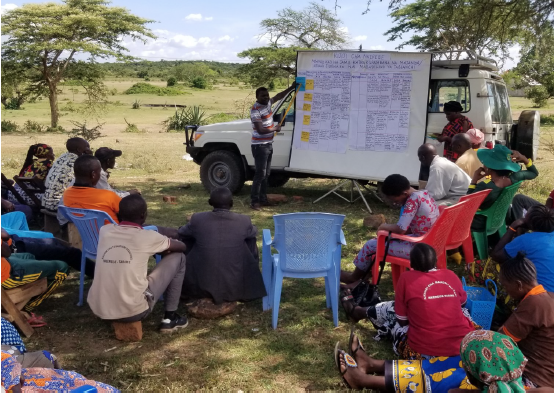The Uluguru Spice Project (USP) – How Ramadhani started to dream big
Ramadhani Sanda is a small-scale farmer from Kinole village in Tanzania, and he has a pretty incredible story.

Ramadhani Sanda is a small-scale farmer from Kinole village in Tanzania, and he has a pretty incredible story. It all started way before the Uluguru Spice Project (USP) came around in 2017. Its goal is to empower small-scale farmers in the Ruvu river catchment area of the Uluguru Mountains by fostering knowledge of sustainable cultivation methods and marketing strategies. He lives in the Uluguru Mountains, surrounded by beautiful greenery and the amazing aroma of spices. Like many others in his community, Ramadhani faced some tough challenges, such as not being able to sell his produce and having low productivity. But he never gave up on his dream of having a better future.

Ramadhani's meeting room, adorned with posters detailing spice production, tells a story of transformation. It was there, in 2017, that he joined the USP, a project whose primary focus lies on spice production and trade, aiming for poverty reduction while safeguarding the ecosystem, igniting his dream to think bigger.

Once, he focused primarily on black pepper cultivation, like many other farmers in his village. When he needed new plants, he always bought a few seedlings from the street. They also produced some cardamom, but the breed did not perform very well in the market. Ramadhani's approach evolved after meeting Joel Paulo, Project Manager of the USP from Sustainable Agriculture Tanzania (SAT). Under Joel's guidance, Ramadhani and fellow villagers embarked on a journey of diversification, learning organic farming methods from scratch and setting up a spice tree nursery.
"The training was a turning point," Ramadhani reflects. "It motivated me to experiment with cinnamon, vanilla, cardamom, cloves, and turmeric." The group's nursery, kickstarted with 100 seedlings from SAT, now boasts over 200 clove seedlings, symbolizing growth and opportunity.

The training has led to an increased production level, which enables members of the group to use the seedlings not only for themselves, but to sell them to others, too. From the money they have gained, a share is added to a group fund.
SAT Saving and Lending Group
The Uluguru Spice Project also incorporated training on the SAT Saving and Lending System, known as the SSLG System. It enables farmers without access to a bank account to save money within a group fund and get loans. The fund allows its members to obtain new work equipment asa group. A loan can also be given to its members individually, e.g. to buy land or finish a house. Additionally, it includes a social fund that helps its members when a wedding or funeral occurs. Ramadhani explains how their group has a leadership structure with a chairman, secretary, treasurer and representatives of their members. "We democratically take decisions.Everyone knows about the decisions and keeps notes in their books."

Challenges and a vision for the future
Asked about challenges the group might have experienced, Ramadhani explains that only some group members were collaborative and took on their responsibilities seriously. Some have remained reluctant and lost hope when not everything turned out well immediately. Now, they are not part of the group anymore. However, others have changed and remained. Overall, the group has brought more unity, cohesion, and economic development to the community.
The group is still small and needs to strengthen its leadership system before moving on to more significant community projects. But for the future, he envisions the Uluguru Mountain Region to become the second biggest spice producer after Zanzibar. As for his future, he wants to expand and get more seedlings.
This project is supported by the Austrian Development Agency (ADA), the operational unit of the Austrian Development Cooperation, and Land Vorarlberg.








